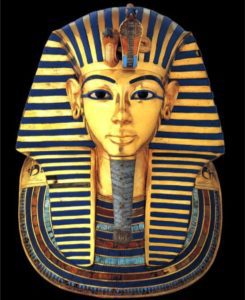In 1922, King Tut’s tomb was found. It was still sealed, meaning it had not been plundered as ad most of the ancient Egyptian tombs. While it is generally considered taboo to disturb the sleep of the dead, archaeologists deemed this find too important to history and science to leave as was found — despite the warnings of tomb itself.
Supposedly, etched above the chamber door was an inscription: “Death will come on swift pinions to those who disturb the rest of the Pharaoh.” If it was there, it would have originally been to ward off grave robbers of the ancient era. It certainly did nothing to dissuade the British excavators.
 Shortly after the tomb’s opening, Lord Carnarvon (the main financier), died of blood poisoning. Then his dog back in England died. This fueled the sensational ideas that a curse had been awoken. This theory was much more enthralling than the rational ideas of poor hygiene in remote places, a European system’s intolerance of pathogens or extreme weather, difficult working conditions or even something in the dust that was kicked up in the tomb.
Shortly after the tomb’s opening, Lord Carnarvon (the main financier), died of blood poisoning. Then his dog back in England died. This fueled the sensational ideas that a curse had been awoken. This theory was much more enthralling than the rational ideas of poor hygiene in remote places, a European system’s intolerance of pathogens or extreme weather, difficult working conditions or even something in the dust that was kicked up in the tomb.
Still the mystery and strange history of King Tutankhamun and his riches inspire people to believe in a curse.

